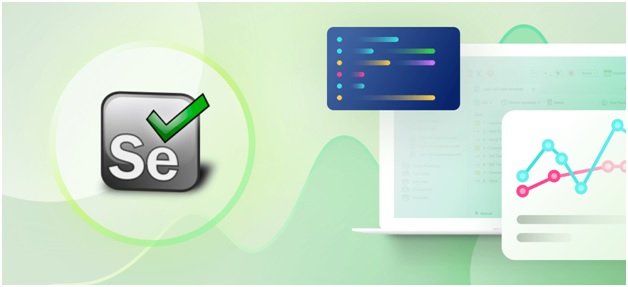Codeless test automation represents an innovative step forward in technology. Popular codeless testing tools like Wix, Squarespace are making fundamental changes to users at all levels, especially non-developers in software development. They help users narrow the gap between increasing demands of product delivery and the technical skills of team members.
Without exception, software testing is also taking a step further to codeless practices.
In order to deal with more release cycles and release faster than before, CI/CD and continuous testing practices are a necessity in the Agile development process. Thus, test automation solutions nowadays should be made accessible to users at all technical levels, including programmers and users without coding skills as well.
That is why, the ultimate aim of codeless test automation is to make the setup easy to use for QA teams that automation testing takes less time and requires almost no coding efforts, no matter how complex the testing framework is.
Comparing Selenium Script-Based Testing and Modern Codeless Testing

As a matter of fact, Selenium has been among the best automation tools for beginning businesses and testers. This open-source test automation platform has been widely adopted due to its flexibility in enhancing test suites, comprehensive integration, and a strong supportive community.
However, Selenium users are required to acquire a steep learning curve and excellent programming capabilities to leverage test automation. This ultimately defeats the whole purpose of test automation, which is to reduce testing time, workload and resources of manual testers in the development cycle, thus tracking the whole process much faster. Therefore, the primary issue of Selenium is the QA teams’ coding expertise and their efforts required.
In 2020, codeless test automation tools can handle these issues. This approach serves to effectively solve the challenge of automated testing: taking away the burden of extensive coding skills, and the demand of businesses to outsource automation professionals to achieve desired outcomes.
Why? Because most codeless test automation tools are driven by user-friendly GUI, built-in instructions, documentations and strong communities of automation specialists. Moreover, codeless test automation provides testers a solution to rapid product development, test data and environment complexities, as well as the gap in testers’ coding skills.
Therefore, QA teams can begin automated testing promptly and efficiently. Advanced coding skills are not required since codeless testing tools have built-in features that can simplify the whole test process – from the very first framework creation until finally maintaining the output.
Understanding Codeless Test Automation Thoroughly

What is codeless test automation?
Codeless test automation means to execute your tests without writing a single line of code. Most current codeless automation tools have ready-made materials to minimize your efforts to write massive codes. For example, recording manual tests and playback, drag and drop interface, and integrating AI/ML technologies, all combined in order to make the scripting process easier and more manageable for QA experts.
How does codeless test automation work?
Codeless test automation tools mainly involve recording step by step by a user-friendly interface, and creating test scripts automatically in the back-end. That means QA experts can spend more time focusing on exploratory testing and functionality assurance.
Codeless testing tools are widely adopted since they significantly changed the mindset of QA teams and their continuous workflow. These tools are unable to replace Selenium and other necessary application elements completely. They are most applicable for continuous testing and regression testing as these testing types are repetitive, thus saving considerable resources for the team.
How does codeless test automation benefit us?
● Cover a wider range of application types
A variety of application devices are supported by codeless test automation tools, involving web browsers, desktop, mobile and other virtual platforms. That means QA teams can implement test automation on many platforms simultaneously in a shorter time.
● Reduce time to market
Codeless testing helps QA teams can avoid time-wasting on executing and revising repetitive test practices to focus more on the testing value and outcome. Moreover, these tools provide scalability by providing a set of integration features while maintaining testing simplicity.
● Strengthen test reusability
Using codeless testing tools, testers can reuse test steps many times automatically. They no longer need to manually integrate and regularly update new changes in their test cases. Machine learning and AI technologies are used in managing, healing and maintaining application aspects in test suites to prioritize reusability and simple maintenance to the fullest.
● Enhance Agile methodology
Without the need for extensive coding skills, team members from different functions and knowledge can engage in the test process. Furthermore, most codeless testing tools are available to all team members with diverse capabilities and responsibilities. This results in transparent information exchange and collaborative workflow among teams.
Katalon Studio – the Codeless Testing Tool That Meets Team Needs for Scalability

Recently Gartner Peer Insights has recognized Katalon Studio as the 2020’s Test Automation Software by Customers’ Choice. More than 65,000 companies trusted and rated Katalon as one of the most fundamental automation software for the testing community due to high adaptability with both scripting and codeless automation needs.
An all-in-one solution for automated testing
Katalon Studio is an automation testing solution that is designated for the entire software development process and accessible for users at all levels of programming knowledge. It is built to solve the challenge of scalability and ROI of businesses by leveraging continuous testing for QA teams.
In addition to the productive IDE in test execution, Katalon Studio also provides a set of integrations including SDLC management, CI/CD pipeline execution and applications to ensure a smooth collaboration and feedback process among teams. Moreover, Katalon TestOps, which marked a major step of the Katalon ecosystem, can generate thorough reports and analytics for testers to revise. AI technology also drives TestOps to achieve more values through automation than previously.
Higher functionality but also easier to use
Katalon Studio has dual scripting interfaces for testers and users at all levels of programming knowledge. With a short learning curve, it can also serve QA experts in the beginning stage of learning automation but still want to leverage it mostly. All built-in instructions, a recorder and predefined test methods can help users to finish their test projects seamlessly.
In addition, Katalon’s Smart Wait feature – shown in Katalon Studio 7, was designed to solve the Wait issues in Selenium. Smart Wait has made Katalon Studio a perfect substitute for the age-old Selenium platform. Smart Wait can particularly wait for all the front-end processes until a web page finishes loading before further steps, hence removing the flakiness problem for test execution.
Increase productivity for test coverage
Katalon Studio can facilitate running on almost all devices and platforms varying from web browsers, API, Desktop, iOS to Android mobile applications. Groovy is mainly supported for test case scripts; thus, it is easier for those learning the Java language to get used to the tool.
Cucumber Runner for BDD and integration with Jira are also supported in Katalon Studio, which ensures a faster feedback loop for Agile team members. During the DevOps project, product developers may need those integrations to build up better management coverage and seamless teamwork for a successful project.
More progress in maintaining test automation
The auto-healing Smart Xpath feature in Katalon Studio, driven by AI algorithms, automatically specifies the web or application elements after each release of the AUT update, then auto-heals during runtime and rapidly adapts to UAT changes.
Lastly, the Visual Object Recognition feature is a major improvement from the auto-healing capability of Katalon. An image represents an object to find while operating the test cases. This feature will handle the issue of identifying objects in an Agile environment wherever new updates are frequently released in smaller batches.
Conclusion
For the foreseeable future, codeless testing is anticipated to be an evolving solution for QA teams in 2020. However, you should be careful to decide which test automation tool is the best fit in the team workflow. The primary elements involving functionalities, supported devices and languages, and integration capabilities help drive the tool to higher standards.
Katalon Studio is one of the few tools currently available in the market that is genuinely applying codeless testing practices. Thoughtful leaders and experts in the testing industry have trusted and highly regarded Katalon as the ideal automation choice for teams for scalability.
You can download the latest version of Katalon Studio to experience the simple automation without writing a piece of code – now with the right tool.
⇓ Subscribe Us ⇓
If you are not regular reader of this website then highly recommends you to Sign up for our free email newsletter!! Sign up just providing your email address below:
Happy Testing!!!
- Top 10 Codeless Testing Tools to Look Out for in 2020
- Automate your Desktop App Testing with Katalon Studio 7
- Top 6 Open-Source and Free Tools For Mobile Testing For 2020
- Creating, Configuring And Using A Board In Jira
- Tutorial 8: Executing A Test Case In TestLink
- Katalon Studio Introduction – The Ultimate Test Automation Solution
- Start your Desktop Apps Testing with Katalon Records feature
- How Katalon Smart Wait feature can handle web loading issues?
- Codeless Test Automation – Going Beyond with Migrating Selenium Tests to Katalon Studio
- API Testing with Postman and Postman Alternatives

1 thought on “Why Can Codeless Testing Tools Overcome the Barriers of Test Automation in 2020?”
Thanks for sharing such a great article.